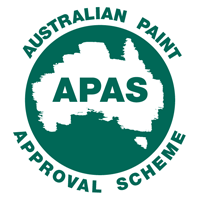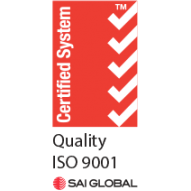There are a few simple steps which can be taken to ensure both longevity and beauty when coating bridges.
The following guide to pitfalls while painting bridges is designed to both achieve the aforementioned goals as well as achieve compliance with Australian, UK and other country Building Standard codes. We discuss seven pitfalls which are common when coating bridges with fluoropolymer paint below.
#1 Surface Uncleanliness
The number one pitfall when coating a bridge is not ensuring the surface of the bridge is totally clean before applying the paint. The surface must be free from salt contamination prior to preparation and painting in order to remain compliant with ISO 8502-9:2020. Removing contamination by water cleaning guarantees that salt contamination does not become lodged into the surface of the bridge. See also A&I FAQ Sheet No. 28.
#2 Dewpoint Condensation
When metal heats up, it can sweat, like a glass of cold beer taken out of the refrigerator. Fluoropolymer paint can become diluted and lose its adhesive quality if a bridge is painted after condensation occurs. To prevent this from becoming an issue, bridges should not be painted if they are within 3°C of the ‘dew point’, which will vary from metal to metal and can be determined using a psychrometer.
#3 Poor Intercoat Adhesion
This point relates to point #1 in the sense that surface cleanliness is paramount to a successful bridge coating. If surface cleanliness is not of a high standard, any contaminants present can interfere with the chemical and/or mechanical bonds that form between the base and top coat. A coating that is outside the recoat window should be abraded so as to secure a mechanical bond.
#4 Colour Variation
Always check colour before mixing. Always ensure mixing is done thoroughly. Keep in mind that metallic colours, while popular on bridges, vary considerably depending on if they’re brushed or sprayed on.
#5 Areas of Soft Paint or Poor Adhesion
Point #5 relates to point #4 in that if paint is not mixed effectively, it can result in areas which appear different to others. In other words, always mix paint properly to ensure an even coat across the whole surface of the bridge.
#6 Surface Roughness or Bubbles
If fluoropolymer paint is used to paint a bridge in hot weather, a bubbling effect can occur which leaves an undesirable finish. In hot weather, it’s best practice to use the recommended thinners to hold the paint film ‘open’ longer, allowing any bubbles which form to escape fully.
#7 Inadequate Coverage
Poor coverage can be counterbalanced by an adequate supply of paint. A&I Coatings supplies data sheets which indicate how far one unit of paint can be spread. However, data sheets do not always account for losses in application. Rolling on a flat surface is relatively low-loss in this regard, whereas tubular applications can be quite high-loss. With some colours based on organic pigments more coats will be needed for coverage.
Contact A&I Coatings Today
All A&I products are 100% Australian made and are sustainable for use in a large range of applications. Our technical team is always ready to steer in right direction on your project Just call 612 4869 1441 or email helpdesk@aicoatings.com if you have any questions. We have distributors in a number of countries, and work closely with a major Australian coating manufacturer and distributor also.





